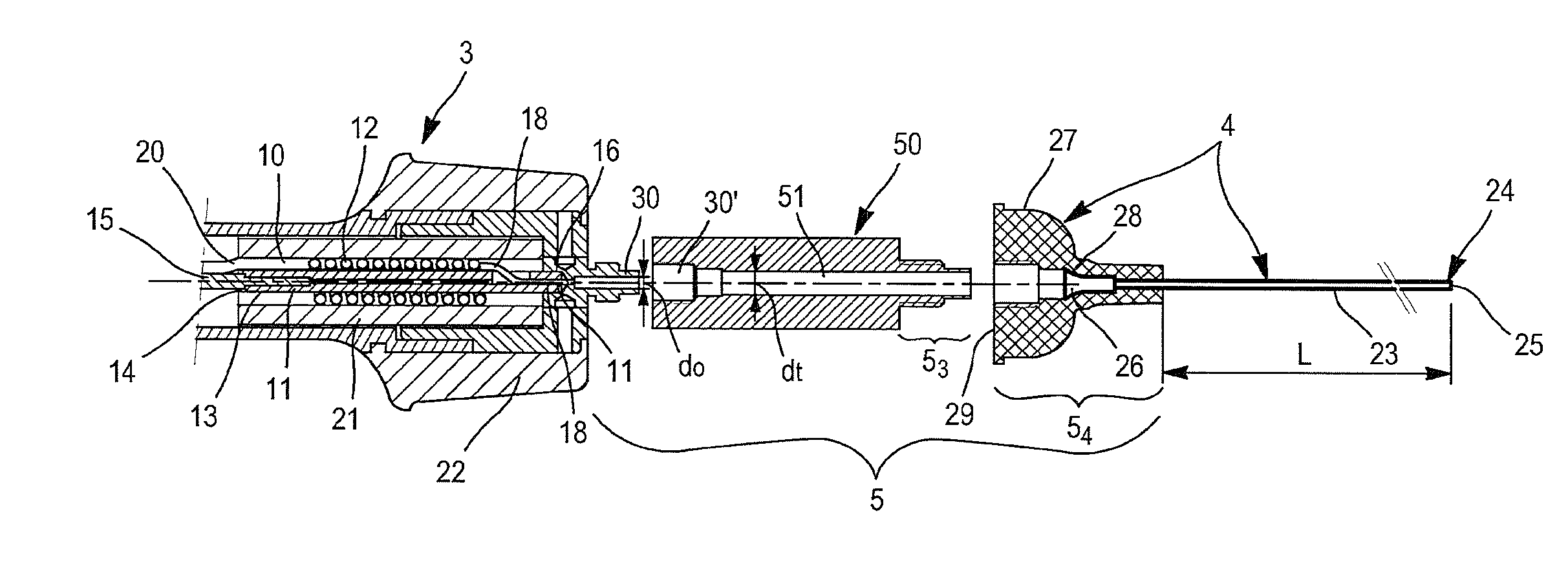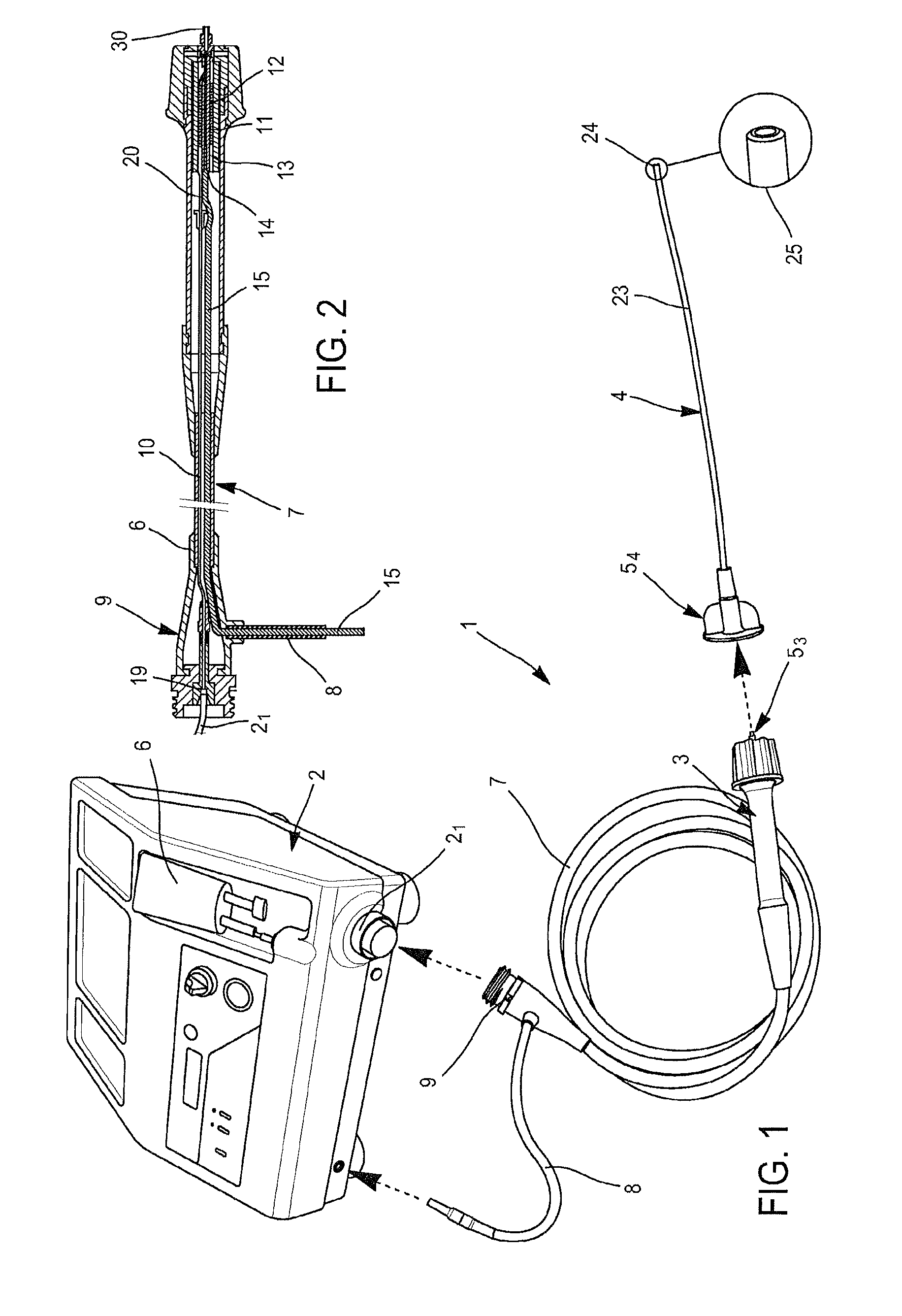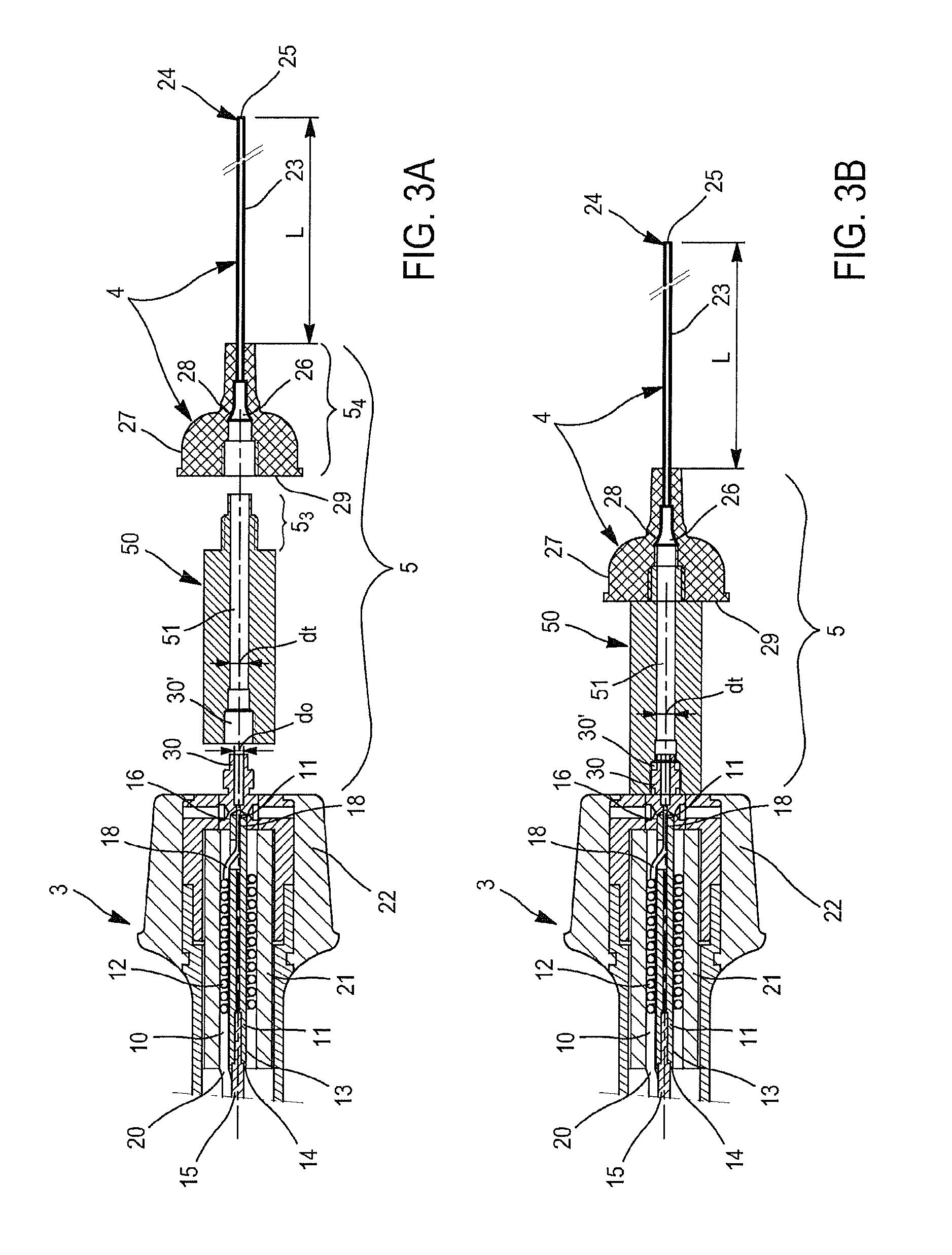Device and Method for Injecting Pulsed Steam Into a Human or Animal Vessel E.G. a Vein
- Summary
- Abstract
- Description
- Claims
- Application Information
AI Technical Summary
Benefits of technology
Problems solved by technology
Method used
Image
Examples
Embodiment Construction
[0110]The invention and the advantages resulting from it are illustrated hereinafter by an example of embodiment in reference to the attached figures.
[0111]FIG. 1 is a diagram of the device according to the invention.
[0112]FIG. 2 is a cross-section in the longitudinal median plan of the hand piece pertaining to the device according to the invention.
[0113]FIG. 3A is a detailed and exploded representation of the section in the longitudinal median plane of the distal terminal part of the hand piece represented on the FIG. 2 and of the endoluminal catheter.
[0114]FIG. 3B is a representation analogous to FIG. 3A in which all the elements shown on FIG. 3A are assembled.
[0115]FIG. 4 is a cross-section in the longitudinal median plan of the catheter presenting a terminal and central opening plus lateral / transversal holes.
[0116]FIG. 4A is a detailed and enlarged view of the proximal coupling part of the endoluminal catheter of FIG. 4.
[0117]FIG. 4B is a detailed and enlarged view of the distal...
PUM
 Login to View More
Login to View More Abstract
Description
Claims
Application Information
 Login to View More
Login to View More - R&D
- Intellectual Property
- Life Sciences
- Materials
- Tech Scout
- Unparalleled Data Quality
- Higher Quality Content
- 60% Fewer Hallucinations
Browse by: Latest US Patents, China's latest patents, Technical Efficacy Thesaurus, Application Domain, Technology Topic, Popular Technical Reports.
© 2025 PatSnap. All rights reserved.Legal|Privacy policy|Modern Slavery Act Transparency Statement|Sitemap|About US| Contact US: help@patsnap.com



